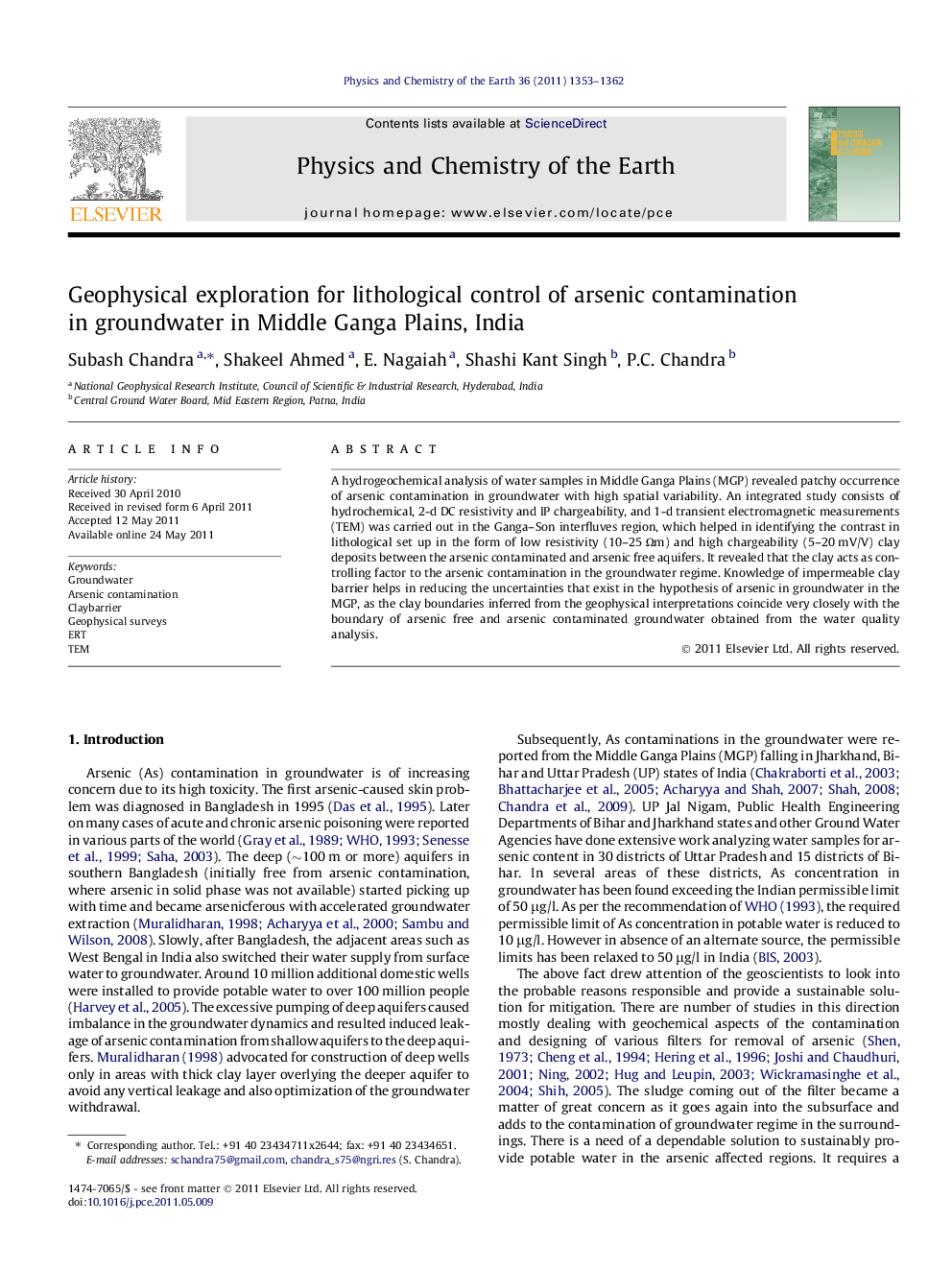| Article ID | Journal | Published Year | Pages | File Type |
|---|---|---|---|---|
| 4721205 | Physics and Chemistry of the Earth, Parts A/B/C | 2011 | 10 Pages |
A hydrogeochemical analysis of water samples in Middle Ganga Plains (MGP) revealed patchy occurrence of arsenic contamination in groundwater with high spatial variability. An integrated study consists of hydrochemical, 2-d DC resistivity and IP chargeability, and 1-d transient electromagnetic measurements (TEM) was carried out in the Ganga–Son interfluves region, which helped in identifying the contrast in lithological set up in the form of low resistivity (10–25 Ωm) and high chargeability (5–20 mV/V) clay deposits between the arsenic contaminated and arsenic free aquifers. It revealed that the clay acts as controlling factor to the arsenic contamination in the groundwater regime. Knowledge of impermeable clay barrier helps in reducing the uncertainties that exist in the hypothesis of arsenic in groundwater in the MGP, as the clay boundaries inferred from the geophysical interpretations coincide very closely with the boundary of arsenic free and arsenic contaminated groundwater obtained from the water quality analysis.
► The first aquifer in Middle Ganga Plains is found contaminated with arsenic, spread in patches. ► The high resolution of ERT provided lithological discontinuity that may cause of vertical leakage and contaminate the safe zones. ► Geophysically identified clay mounts coincide with the contour line demarcating the arsenic contaminated and safe zones. ► The clay deposits are found as localized pockets and acting as a controlling factor to the groundwater contamination. ► Compared to direct current electrical resistivity method, induced polarization found to be more sensitive to clay deposits.
